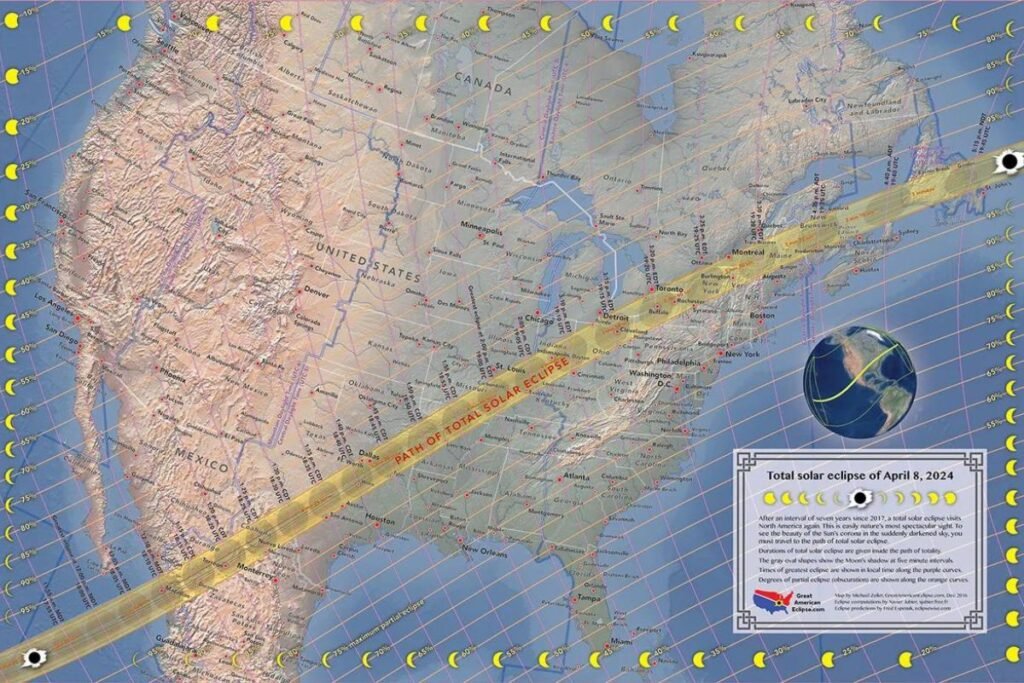An Unmissable Celestial Spectacle
On April 8, 2024, North America will witness a rare and fascinating total solar eclipse. This astronomical phenomenon, stretching from Mexico to Canada and passing through 13 US states, promises to be an unforgettable spectacle for sky enthusiasts and scientists alike.
The Path of Totality: Where to Be

The key to experiencing the total solar eclipse is being within the path of totality, a narrow strip just 185 kilometers wide. Outside this strip, only a partial eclipse will be visible. To plan your viewing location, consult NASA’s interactive map.
The Celestial Dance: How a Total Solar Eclipse Occurs
A total solar eclipse occurs when the Moon precisely aligns between the Earth and the Sun, completely covering the sunlight. This precise alignment is rare, due to the Moon’s orbit being slightly tilted relative to Earth’s orbit.
Safety First: Observing the Eclipse Safely
Never look directly at the sun during a partial eclipse. For safe viewing, use special eclipse glasses or solar filters for telescopes and binoculars. Alternatively, indirect viewing techniques, such as pinhole cameras or colanders, can be used.
Moments of Totality: A Transcendental Experience
During totality, which in this eclipse will last over 4 minutes, viewers can safely look directly at the eclipse without protection. It’s a rare opportunity to see the solar corona and experience darkness in the middle of the day.
Associated Eclipse Phenomena
Besides totality, the eclipse brings other fascinating visual phenomena, such as diamond rings and rippling shadows. These moments provide a unique sensory and educational experience.
Economic and Social Impacts
Large astronomical events like this boost tourism and scientific education. Cities within the path of totality can expect an influx of tourists, while schools and institutions can use the event to promote interest in science.
Our Honest Opinion
The 2024 total solar eclipse is not just an astronomical spectacle; it’s an opportunity for communities to unite in wonder and learning. This event celebrates the wonders of the universe and our ability to understand them.
You may also like:
- Samsung Galaxy Ring: A Revolution in Wearable Technology
- Unveiling Artificial Intelligence in 2024: Advances, Challenges, and the Future of AI
- Solar Shield in Space: A Bold Vision for Climate Change Mitigation
- Wind Trees: Transforming Urban Spaces with Renewable Energy
- Mastercard AI Revolution: A Leap in Fraud Detection
Source: Nasa

